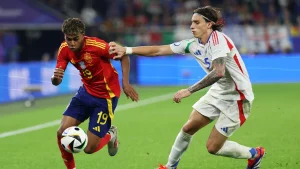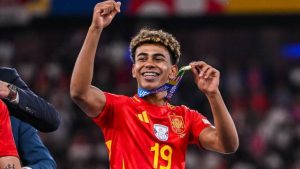1
Section One: The Fundamentals
A) What do we know about sport? What are common assumptions we make about sport and society?
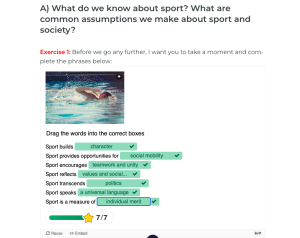
Exercise 3: Notebook prompt
What are some other metanarratives about sport that you are familiar with? Find an image or video clip or draw something yourself that captures this idea…
So what? Why does any of this matter? Does it matter? As something we grow up with – live with – play through – we don’t often interrogate the meanings of sport, and perhaps we don’t want to.
But being aware of these assumptions and metanarratives is especially important, I would argue, because of the centrality of sport to our everyday lives, the role that sport plays in shaping our childhood and worldviews and….. [finish that thought]
| A common metanarrative about soccer is that it unites people worldwide and creates equal opportunities for everyone. However, this isn’t always true. Many people can’t access soccer because of poverty, gender barriers, or lack of resources. Big events like the World Cup may bring nations together but often highlight issues like corruption or unfair treatment of workers. This matters because soccer shapes how
we grow up, learn teamwork, and view success. By understanding these assumptions, we can question the inequalities in soccer and work to make it truly inclusive, ensuring its values match its global appeal.
|
B) What is social justice?
Exercise 4: Padlet Prompt
Think back to the last section and try to look at some of the ideas we discussed differently. How might sport and social justice actually co-exist?
Record any images, video clips, or gifs you added to the padlet and identify a point of intersection between sport and social justice (can be an issue or a barrier or a debate or something you would like to explore in more depth in this course) . Screenshot or paste in your response below.
| Sport and social justice can co-exist when athletes and teams use their platforms to raise awareness and inspire change. Lamine Yamal, a young soccer player with roots in Morocco and Equatorial Guinea, is a great example. As one of the youngest players to break into top-level soccer, his story highlights diversity and the power of representation in sport. His success inspires young players, especially those from underrepresented backgrounds, to believe they can achieve their dreams.
Yamal’s influence also opens discussions about inclusion and breaking stereotypes in soccer, showing how sport can challenge barriers like racism and inequality. This intersection between sport and social justice can push for better opportunities for all players, regardless of their background. Exploring how players like Yamal shape these conversations could be an interesting topic in this course.
|
C) Social Justice Reading
(note: this activity is optional!)
D) KINESIOLOGY AND SOCIAL JUSTICE
Exercise 5:
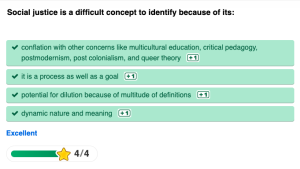
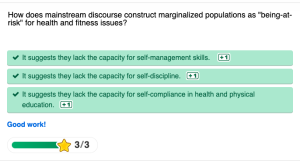


Exercise 6:
What are the implications of bodies-at-risk discourse and the refusal to understand the health gap from a social justice perspective, according to the authors of this article?
| The “bodies-at-risk” discourse and the refusal to address the health gap from a social justice perspective lead to a focus on individual responsibility for health while ignoring larger systemic issues. This approach shifts attention away from factors like poverty, unequal access to healthcare, and social inequality, which are major contributors to health disparities. As a result, health becomes a tool for profit in global economies rather than a fundamental right. This mindset deepens existing inequalities by failing to address the structural barriers that prevent marginalized communities from achieving better health outcomes.
|
Section Two: Sport Feminism
Exercise 7: Notebook Prompt
What is feminism? What does it mean to you? Choose one of the images below and explain how it captures your understanding of feminism (or find one that does speak to you and paste this into your pressbook with an explanation of why it matters to you.
| Feminism, to me, is about equality, empowerment, and challenging societal norms that have historically marginalized women and other gender identities. It is not just about women’s rights but also about creating a more just society for everyone.
Looking at the images, the one that stands out to me is the “We Can Do It!” poster of Rosie the Riveter. This image captures my understanding of feminism as a movement about strength, resilience, and breaking stereotypes. It symbolizes the fight against the idea that certain roles or jobs are limited to specific genders. Rosie’s determined expression and flexed arm show that women can excel in spaces traditionally dominated by men, such as the workforce during World War II. This image matters to me because it reminds me that feminism is not only about changing the present but also about remembering the struggles and contributions of those who came before us. It inspires me to think about how these messages of empowerment and equality can be extended to include everyone—regardless of gender, race, or background—so we can continue building a society that values and uplifts all voices.
|
Exercise 8: Notes Prompt (optional)
NB: Cornell notes is a great resource that teaches effective notetaking. Unfortunately, our system can’t save notes taken in the H5P app, so this is fully optional.
Exercise 9: Crossword Activity
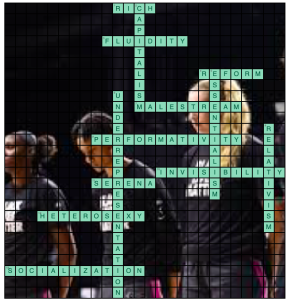
Exercise 10: Padlet Prompt
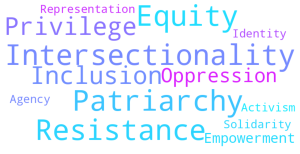
|
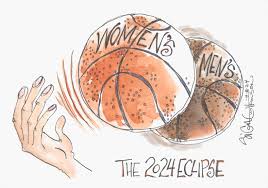
|
|

